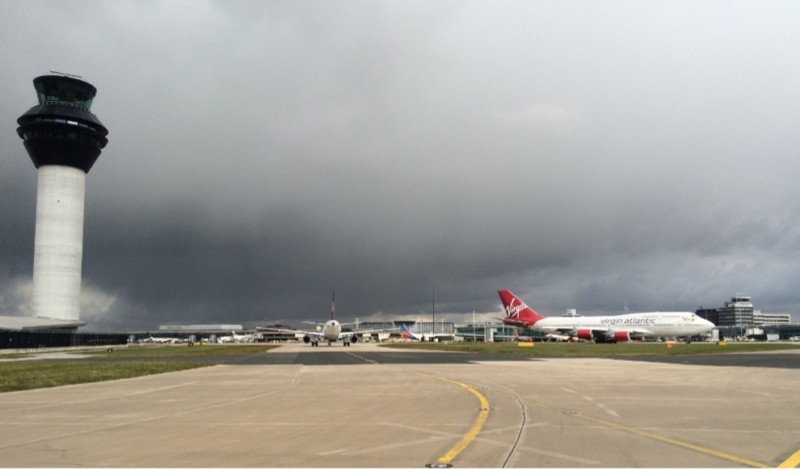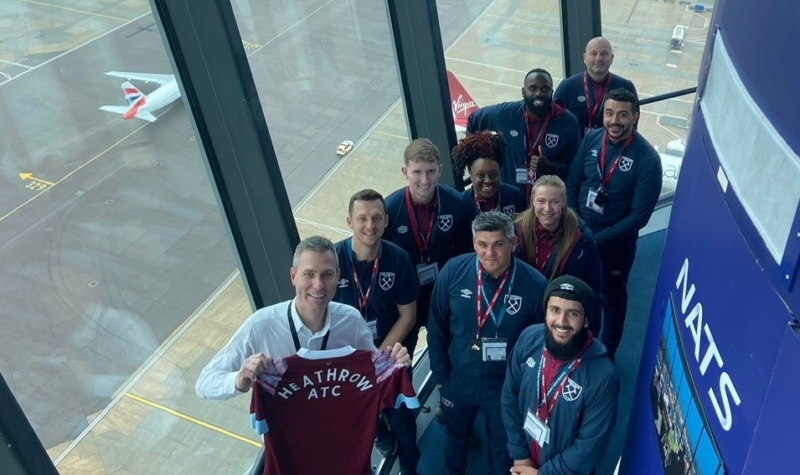How storms rain on our parade
27 June 2023The UK has seen a lot of summer storms in recent weeks, and with thunder, lightning and torrential rain also tend come flight delays. Those are often mysteriously put down to ‘air traffic control restrictions’, but what does that mean in reality and why are storms such a headache for air traffic controllers?
Ask most controllers and the chances are they’ll list storms as one of, if not the biggest, challenge they face in their day to day work. Luckily, our close relationship with the Met Office means that we have their knowledgeable team on site to help us understand where storms are likely to appear and when, however, that still doesn’t mean it is always smooth sailing (or rather, flying).
Uncertainty about where a storm is going to go and how fast can very quickly disrupt even the best laid plans, creating additional complexity in airspace that is already busy. This then creates a lot of additional work for both controllers and pilots.
Fundamentally, pilots don’t want to fly through storms. Although aircraft are robust, storms can still affect aircraft systems and excessive winds within unstable storm clouds make it much more difficult for aircraft to maintain their levels. It also increases turbulence, which negatively impacts passenger comfort.
You guys helped us massively navigate around some huge storms yesterday. 👍🏻 pic.twitter.com/tzc3o4CNMT
— Rich Nash (@richnash82) June 13, 2023
As such pilots will often want to leave their expected routes and can end up in parts of the sky we weren’t expecting and at different times. Because of this, we have to coordinate with the pilots to establish a new route in relation to any other aircraft they might be sharing the airspace with, as well as ensuring that any original traffic is separated from any unexpected additions.
Air traffic controller, Kim explains that:
“Controlling when there is weather avoidance takes extra concentration and effort; aircraft will be out of place, not following standard routes and may be at unusual levels so everything needs double and triple checking. Even if aircraft under our control are following standard routes, neighbouring sectors may have aircraft that are weather avoiding so you have to be mindful of this; that’s where the teamwork element comes in, because you’re also keeping an eye on your fellow controllers when and where you can.”
Meanwhile, on the ground, airports can start to run out of space for new arrivals and because of this, aircraft have to be kept in holding patterns until they can make an approach.
Deputy Operations Supervisor, Fran adds:
“If a storm goes right overhead an airport then it’s likely that nothing will want to land or take-off for a time, so that adds congestion on the ground and holding in the air. And if they still can’t land, a pilot may choose to divert to another airport, something that further adds to the complexity and workload for everyone involved.”
All this is adding layer upon layer of complexity to the operation and more and more workload for both our controllers and the flight crew on board each aircraft. Eventually we have to take steps to reduce the overall number of aircraft in the skies in order to keep the workload manageable and safe. These are called ‘Flow Regulations’ and put a limit in the number of aircraft that can be in a particular sector of airspace at a time.
Flow Regulations are only ever employed when absolutely necessary and have to be expertly timed. Unexpected additional or delayed air traffic can increase the pressure on controllers, particularly when the weather clears. If restrictions are lifted too early, they can risk an overpopulated airspace, while on the flip side, restrictions remaining in place longer than they need to can lead to unnecessary delays, which no one wants.
Although storms are unpredictable, if get caught up in one this summer, one certainty is that your safety is always our top priority
Comments
Please respect our commenting policy and guidelines when posting on this website.



